Outcomes from more than 1,000 surgical patients over 15 years
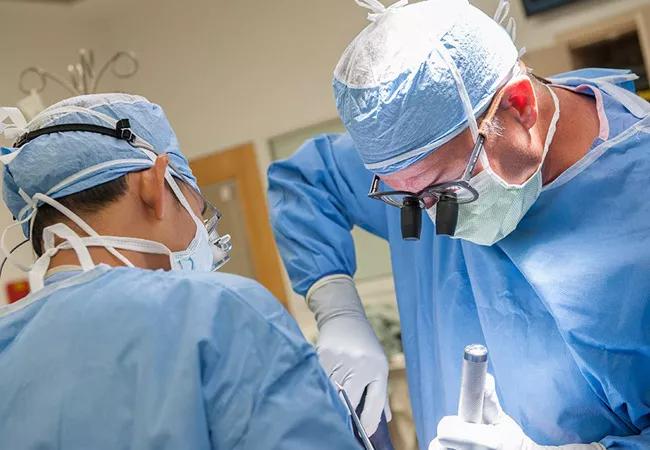
Neurosurgeons in Cleveland Clinic’s Epilepsy Center performed 422 epilepsy surgeries in adult and pediatric patients in 2015, continuing the center’s standing as one of the world’s most active programs of its kind.
Cleveland Clinic is a non-profit academic medical center. Advertising on our site helps support our mission. We do not endorse non-Cleveland Clinic products or services. Policy
A pillar of the program’s success at drawing patients has been a commitment to tracking, reporting and careful analysis of outcomes over many years. Analyses of seizure outcomes following three types of epilepsy surgery over a recent 15-year period reveal some commonalities and differences in patients’ long-term chances of achieving and maintaining seizure freedom according to surgery type. Those seizure outcomes are detailed in the graphs below, with outcomes classified using the widely accepted Engel classification of seizure freedom (seizure-free = Engel class I).
Temporal lobe resection is the most commonly performed surgical procedure for medically intractable epilepsy. As reflected below, more than 65 percent of adult and pediatric patients undergoing this operation at Cleveland Clinic during the 15-year analysis period have remained seizure-free a decade or more after surgery.
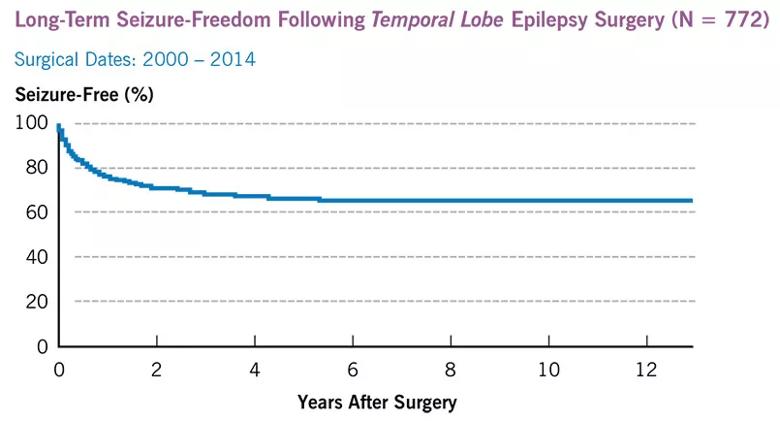
Although traditionally considered the most challenging type of epilepsy surgery, frontal lobe resection is the second most commonly performed operation for medically intractable epilepsy. As shown below, approximately 50 percent of Cleveland Clinic patients remain seizure-free out to eight years after surgery, although the percentage drops to approximately 35 percent beginning at nine years.

Posterior quadrant resection is used in cases of intractable epilepsy involving the posterior temporal, parietal and/or occipital regions. As detailed in the graph, approximately 60 percent of Cleveland Clinic patients undergoing this procedure remain seizure-free out to 12 years following surgery.
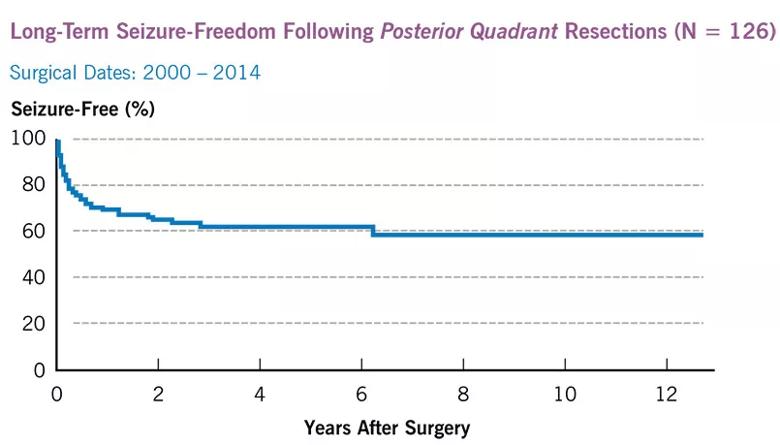
These data represent just a sampling of the epilepsy outcomes reported in Cleveland Clinic’s newly released 2015 Neurological Institute Outcomes Book, the latest in a series of comprehensive outcomes compendiums issued each year by more than a dozen of Cleveland Clinic’s clinical institutes. The publication shares a wealth of volume statistics, procedural outcomes and patient-reported outcomes across the full range of brain and spine care, from epilepsy to movement disorders to stroke.
This long-standing Cleveland Clinic outcomes reporting initiative is designed to help inform external clinicians’ potential referral or consultation decisions. At the same time, the process of outcomes collection and analysis behind the books guides Cleveland Clinic’s continuous improvement efforts and yields data to generate new research questions.
To check out the online version of the 2015 Neurological Institute Outcomes Book, click here.

Favorable rates may stem from focus on outcomes monitoring
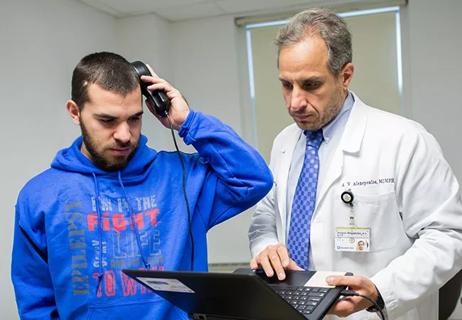
Nearly two-thirds of patients see clinically meaningful gains in large series

Treatment outcomes validate clinic's group-therapy approach
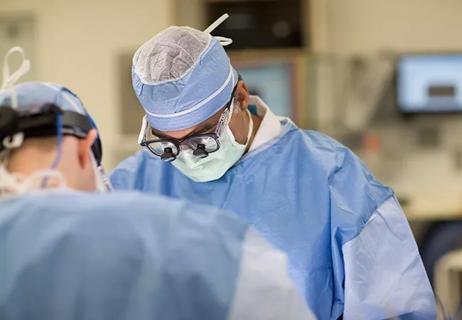
Insights from the first studies of HCAHPS data in this setting

Collaboration, institutionalizing best practices are central
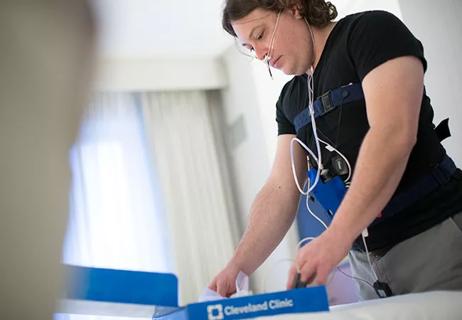
Outcomes outtakes ranging from home sleep testing to QoL effects

Diversifying the mix with intensive outpatient care, shared appointments

Most patients report relief from intractable spasms